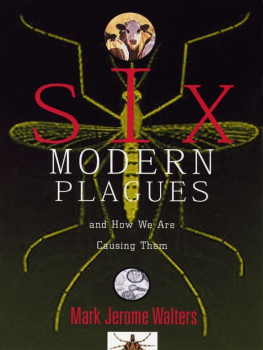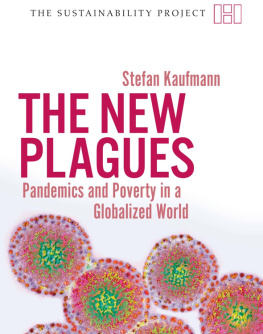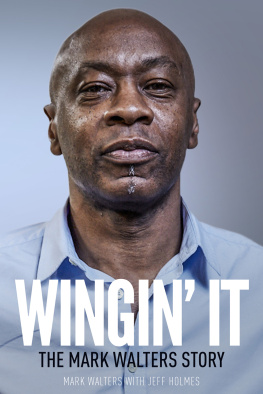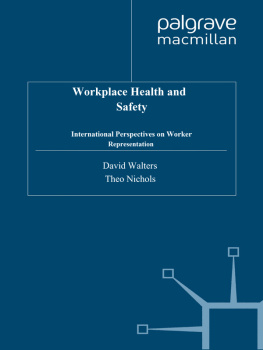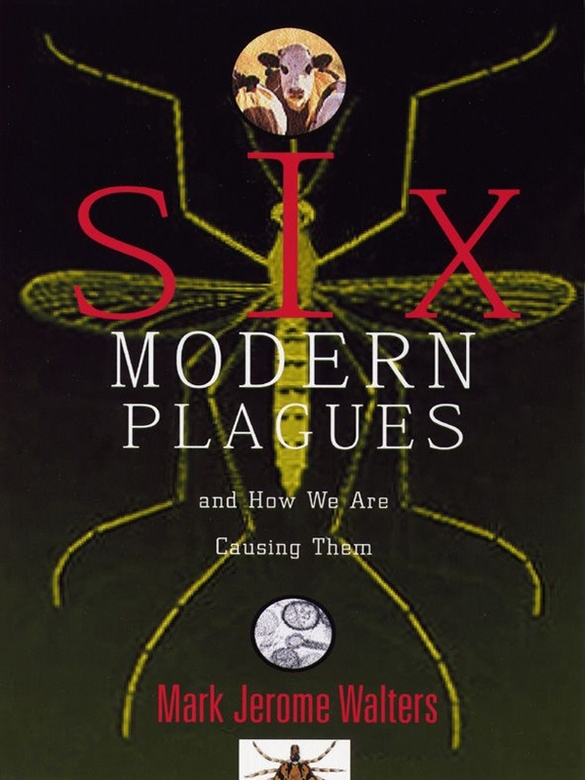Acknowledgments
I wish to thank Charles Halpern, former president of the Nathan Cummings Foundation, for his ideas and enthusiasm that helped bring this book into existence. Henry Ng, the foundations former executive vice president, offered unfailing enthusiasm and support for the idea during my time as a program officer there. My colleague Elvina Scott was always an enthusiastic voice. I also wish to thank the foundations trustees; my special thanks go to Adam Cummings.
I wish to thank the many researchers who gave interviews, corresponded with me, or read drafts of chapters. Their comments, suggestions, and corrections were invaluable. Although any remaining mistakes belong to me, my appreciation belongs to them for their efforts in helping translate complex subjects into these six stories.
In particular, Tony McMichael offered valuable comments on the introduction; David Bee, Marcus G. Doherr, Christl A. Donnelly, Peter Stent, and Tom Thorne assisted with the chapter on bovine spongiform encephalopathy; Robert Cooper, Bill Cummins, Eric Delaporte, Sian Evans, Beatrice Hahn, Martine Peeters, and Jean-Christophe Vi helped with the chapter on HIV/AIDS; Fred Angulo, Karen Florini, Cynthia Hawley, Mara Vijups, Patrick Wall, and Linda Ward provided invaluable assistance with the salmonella chapter; Linda and John Beckley, Jeff Dunbar, Richard S. Ostfeld, Sarah E. Randolph, and Ted Stiles helped with the chapter on Lyme disease; James Cheek, H. D. Grissino-Mayer, Ben Muneta, Robert Parmenter, Steve Sternberg, and Ron Voorhees helped with the hantavirus chapter; and John Charos, Jonathan Day, Tracey McNamara, Mertyn Malkinson, Bob Perschel, John H. Rappole, Joshua Robin, and Steve Wiersma lent invaluable assistance with the chapter on West Nile virus.
My many conversations with other scholars who are helping to unravel the connections between ecology and health were invaluable. These include A. Alonso Aguirre, Peter Daszak, Jim Else, Paul R. Epstein, Gretchen Kaufman, Stuart B. Levy, Michael McCally, Ted Mashima, Steve Osofsky, Jonathan A. Patz, Mary C. Pearl, Mark Pokras, and Gary M. Tabor.
I have been blessed to have had caring and gifted mentors throughout my life. Thomas Konsler patiently taught me the art of raising honeybees when I was sevenan experience that galvanized my interest in science; Mrs. Hutton and Joseph Lalley of Gibbons Hall encouraged me at a time in my life when I most needed it; and Ron Bromley, Chuck Carter, Doc Embler, Pop Hollandsworth, and John L. Tyrer influenced my life enormously when I was a student at the Asheville School. Derek Sarty taught me that the natural sciences could be as artistically inspiring as the expressive arts. Jeremy Dole gave me my first professional writing assignment. George Archibald has encouraged my work for nearly twenty years. Sheila Moffat, David Sherman, Al Sollod, and Chip Stem provided encouragement and support through my years in veterinary school. I am indebted to Michael Lerner and Scott McVay, who have taught me so much. The late Franklin Lowe was an inspiring mentor.
Fritz von Klein has been an everlasting source of friendship and encouragement. A special thanks to Terry Whalen for years of love, encouragement, and support. Many others have encouraged my writing at one time or another, including Rene Askins, Ian Baldwin, Richard Bromfield, Sue Carlson, Lisa Drew, Peter Eddy, Tim Kochems, Pam McCormick, Joni Praded, Mary Suchowiecki, and Lori Tucker. Kim Elliman has given invaluable advice and help over the years. My special thanks to Charles and Esther Krupin for their support.
I have benefited enormously from my association with many generous friends and colleagues over the years, including George Aguilar, Brett G. Anderson, Bob Baldwin, Val Beasley, Beto Bedolf, John Bennett, Ken Brecher, Hooper Brooks, Claudine K. Brown, Clell Bryant, Betsy Campbell, Alexandra Christy, Carlo Colecchia, Andi Colnes, Rachel Cowan, James Cummings, Rick Cummings, Roberta Cummings, Sonia Cummings, Barbara Knowles Debs, Dianne Dumanoski, Stephen P. Durchlag, Bill Eddy, M. Annette Ensley, Cynthia Evans, Peter Forbes, Joel Getzen-danner, Marion Gilliam, Ken Gilmore, Paul Gorman, David Grant, Jim Haba, Leslie Harroun, Robert Hass, Tony Hiss, Dee Hock, Kurt Hoelting, Lloyd Huck, William Hull, Marty Kaplan, Philip C. Kosch, Jane Kretzmann, Andrea Kydd, Rob LeBuhn, Reynold Levy, Nancy Lindsay, Harvey Locke, Lynn Lohr, Kit Luce, Dan Martin, Beatrice Cummings Mayer, Robert N. Mayer, Bill Meadows, Betsy Michel, Elise Miller, Piikea Miller, Suzanne Murray, Pete Myers, Anita Nager, Michael Northrop, Margaret ODell, Paul ODonnell, Sandy Oschelegel, Frank Parker, Robert Perry, Rachel Pohl, Catherine Porter, Will Rogers, Jonathan Rose, Donald Ross, Andrew Rowan, George Saperstein, Jeanne Sedgwick, Kathy Sessions, Brian Sharp, Albert Siu, Ed Skloot, Ted Smith, Ruth Cummings Sorensen, Fred Sowers, Jim Stevens, Ed Thompson, Ken Tomlinson, Mary Evelyn Tucker, Alicia Ushijima, Mark Valentine, Anne Fowler Wallace, Alvin Warren, Debra Weese-Mayer, Kenneth Wilson, and Laurie Lane- Zucker.
I thank my colleagues in the Department of Journalism and Media Studies at the University of South Florida St. Petersburg, who have created an enormously rich and productive atmosphere not only for students to learn the craft of journalism but also for faculty to teach and practice it.
Jonathan Cobb, executive editor of Shearwater Books/ Island Press, immensely improved the manuscript every time he read it. His abiding love of words and his deep grasp of science combine to give him an editorial eye that is at once analytical, intuitive, and imaginative. Pat Harris copyedited this book with amazing clarity, passion, and precision. Chuck Savitt, president of Island Press, encouraged the idea for this book early on. Tom Bruno of Harvard Medical Schools Francis A. Countway Library of Medicine provided invaluable support in my quest for articles.
There are those who helped to make this book, and there are those who make my life: Noelle, William, and Anna, thank you for your love and presence.
Epilogue
SARS and Beyond
It is only a matter of time, many epidemiologists warn, until another epidemic on the scale of the Spanish influenza outbreak of 19181919, or the current HIV/AIDS pandemic, sweeps across the globe. The National Academy of Sciences Institute of Medicine recently cautioned:
Todays outlook with regard to microbial threats to health is bleak on a number of fronts.... Pathogensold and newhave ingenious ways of adapting to and breaching our armamentarium of defenses. We must also understand that factors in society, the environment, and our global interconnectedness actually increase the likelihood of the ongoing emergence and spread of infectious diseases.
So it shouldnt have been a complete surprise when, in late 2002, a previously unknown virus struck people in the form of severe acute respiratory syndrome, or SARS. David L. Heymann, executive director of communicable diseases at the World Health Organization in Geneva, Switzerland, declared SARS the first severe and easily transmissible new disease to emerge in the 21st century. It has now joined a growing list of disturbing new epidemics that already included HIV/AIDS, Ebola hemorrhagic fever, Lyme disease, and a host of otherssome mild, others fatal.
This recent outbreak began, according to the Centers for Disease Control and Prevention, in Guangdong Province in southern China in November 2002, when dozens of people there began to experience headaches, muscle soreness, and dry coughs that quickly deteriorated into life-threatening pneumonia. Within months, the illness had spread throughout Guangdong, where government authorities, fearing social unrest and the loss of tourism, tried to keep the outbreak secret. No medical statistics were released, and journalists were prohibited from reporting on the deadly epidemic.

